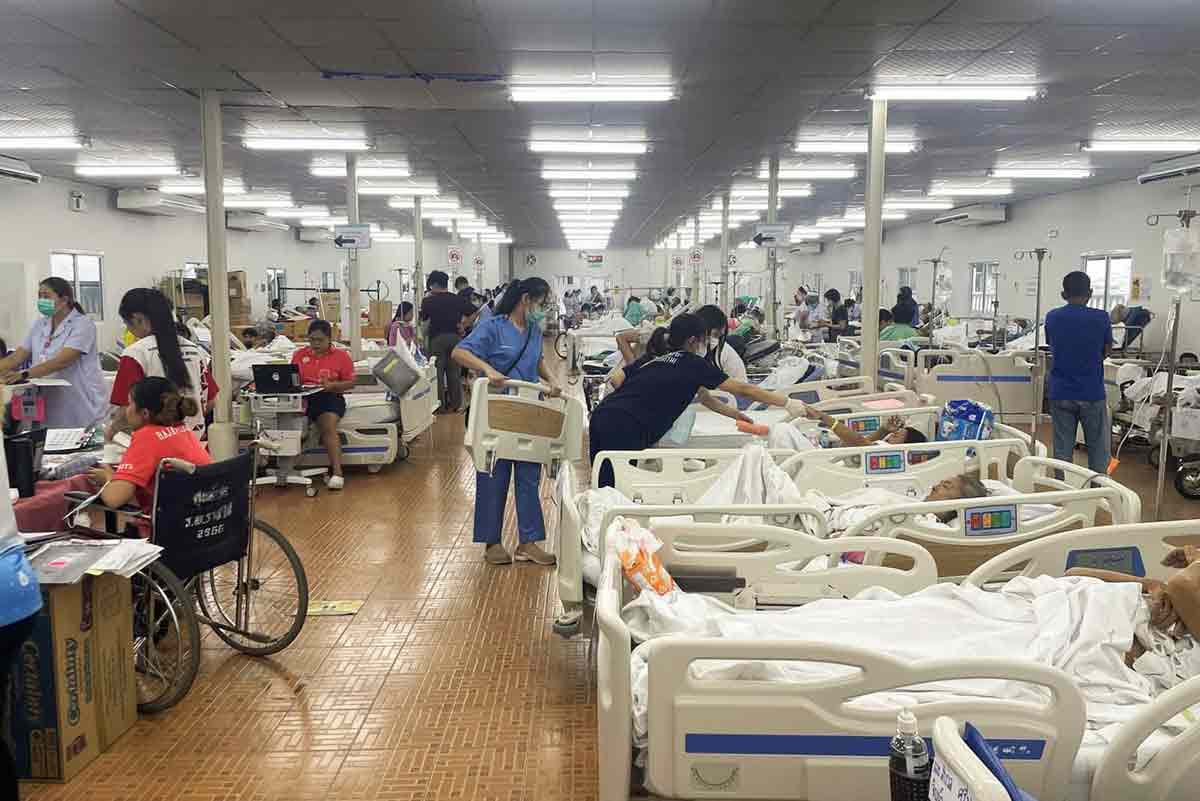On March 28, 2025, a powerful 7.7 magnitude earthquake struck central Myanmar, causing massive devastation across the country. The epicenter was located near Mandalay, Myanmar’s second-largest city, which saw numerous buildings collapse, roads buckle, and bridges fall.
According to official government reports, the earthquake has so far claimed 1,002 lives, injured 2,376 people, and left 30 missing. Authorities warn that these numbers could rise as search and rescue operations continue.
Aftershocks and Further Devastation
Following the initial quake, several aftershocks were recorded, the most severe measuring 6.4 magnitude. These secondary tremors have exacerbated structural damage, causing additional collapses and impeding relief efforts.
In Naypyidaw, Myanmar’s capital, authorities struggled to restore essential services. Electricity, internet, and phone networks were severely disrupted, leaving many residents disconnected from emergency services.
Mass Destruction and Infrastructure Damage
The earthquake has wreaked havoc across Myanmar:
- Buildings have crumbled, including government offices, residential complexes, and commercial structures.
- Bridges collapsed, disrupting transportation and hampering rescue missions.
- Roads were destroyed, making it difficult for emergency teams to reach affected areas.
- A dam burst, leading to further flooding and displacement of people.
Rescue Operations and Relief Efforts
The Myanmar military-led government has launched extensive search and rescue operations to locate survivors trapped under debris. However, civil conflict and damaged infrastructure pose significant challenges.
International aid organizations and neighboring countries have stepped in to assist:
- China has dispatched a 37-member team equipped with drones and earthquake detectors.
- Russia has sent 120 rescuers along with medical and relief supplies.
- India has provided search-and-rescue teams and medical provisions.
- The United Nations has allocated $5 million in initial aid relief efforts.
Despite these efforts, authorities warn that thousands remain trapped and in urgent need of medical assistance, food, and shelter.
Impact on Neighboring Thailand
The earthquake’s tremors were felt in Thailand, particularly in Bangkok and other northern regions. In the greater Bangkok area, home to 17 million residents, high-rise buildings swayed, causing widespread panic.
A 33-story under-construction high-rise collapsed near Chatuchak Market, resulting in:
- 6 confirmed deaths
- 26 injured individuals
- 47 missing persons
Emergency responders in Thailand are racing against time to find survivors amidst the debris.
Survivor Accounts: Heartbreaking Stories from the Ground
Survivors of the earthquake have shared harrowing experiences:
Naruemol Thonglek, a Thai resident whose loved ones were at the collapsed Bangkok construction site, shared her grief:
“I was praying that they had survived, but when I got here and saw the ruin — where could they be? In which corner? Are they still alive? I am still praying that all six are alive.”
In Mandalay, families have been digging through rubble, hoping to find missing relatives. Many survivors have been left homeless, as emergency shelters fill up with the displaced.
Government Response and Future Preparedness
Myanmar’s military leader, General Min Aung Hlaing, has personally visited affected areas to oversee rescue operations. The government has pledged:
- Emergency relief efforts, including medical aid, food, and temporary shelters.
- Long-term rebuilding plans to reconstruct critical infrastructure and ensure disaster resilience.
- A renewed focus on earthquake preparedness, given the region’s vulnerability to seismic activity.
Global Community Calls for Urgent Action
The earthquake has reignited discussions on disaster preparedness in Southeast Asia. Experts are urging:
- Stronger earthquake-resistant infrastructure.
- Improved disaster response coordination.
- Increased public awareness campaigns to educate communities on emergency preparedness.
Conclusion
The Myanmar earthquake of 2025 stands as one of the deadliest natural disasters in recent Southeast Asian history. With over 1,000 lives lost, thousands injured, and countless families displaced, the region faces a long road to recovery.
As rescue efforts continue and international aid pours in, the focus remains on saving lives, rebuilding communities, and strengthening preparedness to prevent future catastrophes.
Stay updated with the latest developments on the Myanmar earthquake 2025 as relief efforts unfold.
YAllA TV – www.yallatv.ae





